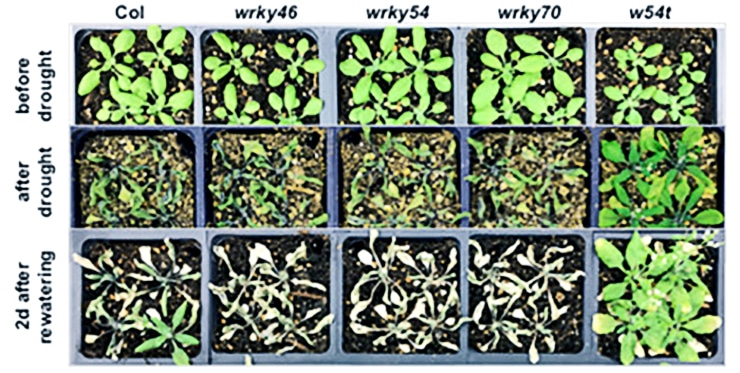A group of proteins called WRKYs (pronounced ‘workies’) govern both stress response and growth in plants, report researchers. This makes the proteins of particular interest to plant breeders and crop growers eager for varieties that will withstand dry conditions.
“They are important regulators for the balance of drought response and growth,” says Yanhai Yin, a professor of genetics, development, and cell biology at Iowa State University. “They are very promising targets for plant breeding.”

The paper describes how researchers in Yin’s lab managed to cross Arabidopsis plants in such a manner as to eliminate, or “knock out,” three different WRKYs genes, named for the several critical amino acids of which they’re composed. The resulting plants showed dramatically less growth than normal but were more drought tolerant. Arabidopsis is a small flowering plant often used as a model in experiments.
Much of Yin’s research has centered on a plant protein known as BES1, an important switch in plant genomes regulated by a plant steroid called brassinosteroid that influences thousands of other genes. Yin says WRKYs and BES1 work together to promote plant growth under normal conditions.
Plants can’t run from stress, but they can adapt
Previous studies have shown that WRKYs also help to govern bacterial response in plants as well.
Yin says his future studies will tease out how growth, drought tolerance, and bacterial response interact with one another. Such efforts could lead to crops with genetics better suited to withstand many of the most pressing challenges producers face.
As the paper hints, harnessing the versatility of WRKYs to breed more resilient crops would make rain gauges look primitive by comparison.
How plants slow their growth under stress
The paper appears in the journal Plant Cell. Additional contributors to the paper include Iowa State University and China Agricultural University.
Source: Iowa State University



